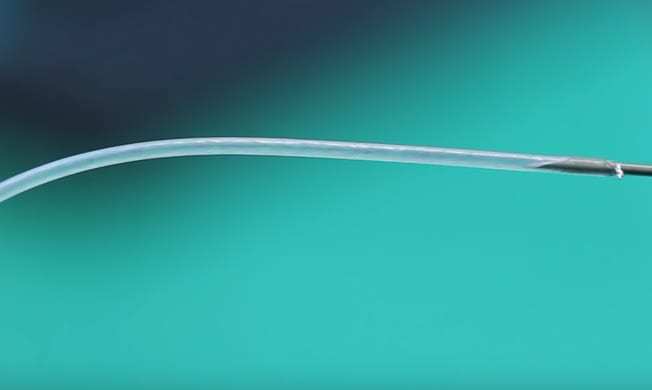New elastic fibers developed by North Carolina State University researchers may open many doors for wearable tech.
Touch sensitive technology developed by North Carolina State University researchers could soon be integrated into wearable devices. This tech is based on new forms of elastic fibers created by those researchers.
The purpose of the elastic fibers is to make it possible to create wearables with touchscreen-like capabilities.
The touch sensitive technology was created by the researchers to be both stretchable and soft. It can work to detect strain, touch and twisting, according to chemical and biomolecular engineering professor, Michael Dickey. Each fiber is microscopic, giving it tremendous potential for integration into new tech such as wearable devices, said Dickey.
“They key idea is to be able to put touch sensitive technology in a fiber that is very stretchable,” he said in a media interview.
The sensing mechanism of the touch sensitive technology is “nearly identical to a touchscreen,” said Dickey.
That said, he pointed out that there are two primary differences between the touch sensitivity of the elastic fibers and of a touchscreen. “It is in the shape of a fiber, which means it could–in principle–be incorporated into clothing for example and two, it is as stretchable as a rubber band,” he explained.
The overall concept of the electronic fibers is relatively basic, according to Dickey. The research team created elastic tubes that were hollow and then filled with a liquid metal eutectic gallium and indium (EGaIn) alloy. Each tube fiber is made of three strands. Any given strand in these fibers has a diameter of only a few hundred microns. This means it is only a little bit thicker than the average person’s strand of hair.
The researchers experimented with filling the fiber tubes with different EGaIn volumes. In the end, the version they created has one completely filled with the alloy, one two thirds-filled and one one-third filled. The researchers then twisted the three strands together to make a tightly spiraled fiber. The liquid center of the fibers allows it to flow along with the movement and stretching of the fibers. Moreover, they function as touch sensitive technology as they remain conductive the whole time.


